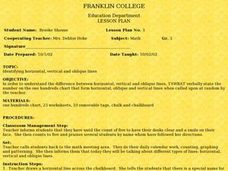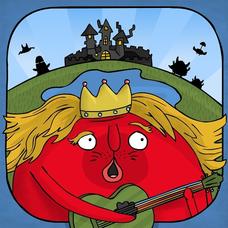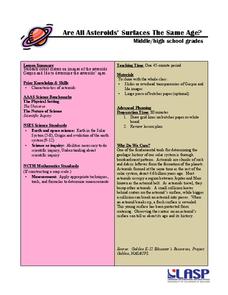Curated OER
It's Mine Lesson Plan
Students read a book called It's Mine! In this lesson about three frogs and sharing, students explore how what they do affects everything around them. Through a series of seven different activities, students interpret the frogs and their...
Curated OER
Draw a Picture
In this problem solving strategies worksheet, students read and analyze the instructions and examples for drawing a picture to solve a math problem. Students solve 1 problem pertaining to students' positions in a line.
Curated OER
Identifying Horizontal, Vertical and Oblique Lines
Third graders watch the teacher draw a horizontal line across the board. They listen to the definition of horizontal and has a student demonstrate putting their body in a horizontal position. This is repeated with a vertical line. The...
Curated OER
A Unique Drawing Experience
Learners complete a drawing based on a set of instructions. They discover how their classmates have a different drawing based on the same instructions. They discuss how they completed the assignment as a class.
EngageNY
Three-Dimensional Space
How do 2-D properties relate in 3-D? Lead the class in a discussion on how to draw and see relationships of lines and planes in three dimensions. The ability to see these relationships is critical to the further study of volume and...
Curated OER
Clothe Batik and Color Blending
Fabric dyeing and textile art has been around for hundreds of years. Budding fabric artists explore the Batik dyeing technique and color blending as they create unique and personal designs. The full step-by-step procedure and materials...
Curated OER
Line Painting Flowers
Students study the watercolor and acrylic work of Geoff Slater and create their own versions of the art. In this line painting lesson, students study examples of Geoff Slater art and focus on his line paintings. Students discuss the...
iMagine Machine
The Land of Venn - Geometric Defense
Young mathematicians use their geometry skills to save the Land of Venn in an engaging math game. A fun way to reinforce children's understanding of basic geometric figures and shapes.
Liberty Union-Thurston
Equivalent Fractions
The next lesson in a math series builds off the previous one in which learners estimated fraction amounts using fraction bars. Here, pupils view equivalent fractions with unlike denominators using fraction bars. Lastly,...
Curated OER
Speed
Fifth and sixth graders practice working in pairs to determine whether they can walk with constant speed. They test themselves, collect their data, draw graphs with their data collected, manipulate the data, and then draw conclusions...
EngageNY
Nonlinear Models in a Data Context
How well does your garden grow? Model the growth of dahlias with nonlinear functions. In the lesson, scholars build on their understanding of mathematical models with nonlinear models. They look at dahlias growing in compost and...
West Contra Costa Unified School District
Solving Inequalities
What does translating points on a number line have to do with solving inequalities? Young mathematicians first learn about translations of points on a number line, and then use this information to solve linear inequalities in one variable.
Curated OER
Billy Brown and the Belly Button Beastie
Students explore the book Billy Brown and the Belly Button Beastie. In this verb, onomatopoeia, and syllable lesson, students pantomime verbs, read onomatopoeia from the story and clap out syllables. Students unscramble sentences from...
EngageNY
Writing and Graphing Inequalities in Real-World Problems
Inequalities: when one solution just doesn't suffice. Individuals learn to write inequalities in real-world contexts and graph solution sets on the number line. All inequalities in the lesson are of the form x < c or x < c.
Curated OER
The Solstices
Compare surface temperatures when the solstice occurs in the different hemispheres. Young scientists draw conclusions from their investigation of data collected using spreadsheets and a globe.
University of Colorado
Are All Asteroids' Surfaces the Same Age?
Did you know scientists can tell the age of an asteroid by looking closely at its craters? This final lesson of a six-part series focuses on two asteroids, Gaspra and Ida, in order to demonstrate the concept of dating asteroids. Scholars...
West Contra Costa Unified School District
Graphing Piecewise Functions
Step up to learn about step functions. The lesson plan, designed for high schoolers, first covers piecewise functions and how to draw their graphs. It then introduces step functions, including the greatest integer (floor) and...
EngageNY
How Far Away Is the Moon?
Does the space shuttle have an odometer? Maybe, but all that is needed to determine the distance to the moon is a little geometry! The lesson asks scholars to sketch the relationship of the Earth and moon using shadows of an eclipse....
EngageNY
Real-World Positive and Negative Numbers and Zero II
Continuing from the previous lesson in the series, scholars learn to use positive and negative integers to describe real-world situations. In groups, they come up with their own situations for given positive and negative integers.
Curated OER
Project Based Learning
What is Project-Based learning? Find out with a great informaitonal article that includeds multiple web and lesson links. Positive aspects of investigative and project based learning are some highlights you'll read about.
Curated OER
Artificial Selection
The second lesson in the series begins with a starter activity discussing wild versus domesticated animals. Then, scholars play a card game, with optional variations, to emphasize artificial selection. Next, they attend a field trip to a...
Curated OER
Theobroma - Food of the Gods
Students discuss the history of cacao and its use in the production of chocolate. They analyze actual cacao pods and record their observations. Finally they create a five minute contour drawing of the cacao pod and seeds.
Teach Engineering
Magnetic Fields
Introduce your class to magnetic fields with an activity that demonstrates that a compass is affected by the magnetic field of the earth, unless a closer, stronger magnetic field is present. Pupils can use this fact in the...























